The question is a bit what purpose the rectangle should serve. If it is simply a rectangle bound to ax2 but extending up to the upper edge of ax1 a rectangle can be created like
import matplotlib.pyplot as plt
import numpy as np
fig, (ax1, ax2) = plt.subplots(2, 1, sharex=False, sharey=False, figsize=(15,9))
x = 2 * np.pi * np.arange(1000) / 1000
y1 = np.sin(x)
y2 = np.cos(x)
ax1.plot(x,y1)
ax2.plot(x,y2)
rect = plt.Rectangle((1,0), width=1, height=2+fig.subplotpars.wspace,
transform=ax2.get_xaxis_transform(), clip_on=False,
edgecolor="k", facecolor="none", linewidth=3)
ax2.add_patch(rect)
plt.show()

But that will of course stay where it is, even if the limits of ax1 change. Is that desired?
So maybe a more interesting solution is one where the rectangle follows the coordinates in both axes. The following would only work in matplotlib 3.1, which is as of today only available as prerelease
(pip install --pre --upgrade matplotlib)
import matplotlib.pyplot as plt
from matplotlib.patches import ConnectionPatch
import numpy as np
fig, (ax1, ax2) = plt.subplots(2, 1, sharex=False, sharey=False, figsize=(15,9))
x = 2 * np.pi * np.arange(1000) / 1000
y1 = np.sin(x)
y2 = np.cos(x)
ax1.plot(x,y1)
ax2.plot(x,y2)
def rectspan(x1, x2, ax1, ax2, **kwargs):
line1, = ax1.plot([x1, x1, x2, x2],[0,1,1,0],
transform=ax1.get_xaxis_transform(), **kwargs)
line2, = ax2.plot([x1, x1, x2, x2],[1,0,0,1],
transform=ax2.get_xaxis_transform(), **kwargs)
for x in (x1, x2):
p = ConnectionPatch((x,1), (x,0),
coordsA=ax2.get_xaxis_transform(),
coordsB=ax1.get_xaxis_transform(), **kwargs)
ax1.add_artist(p)
rectspan(1, 2, ax1, ax2, color="k", linewidth=3)
plt.show()





